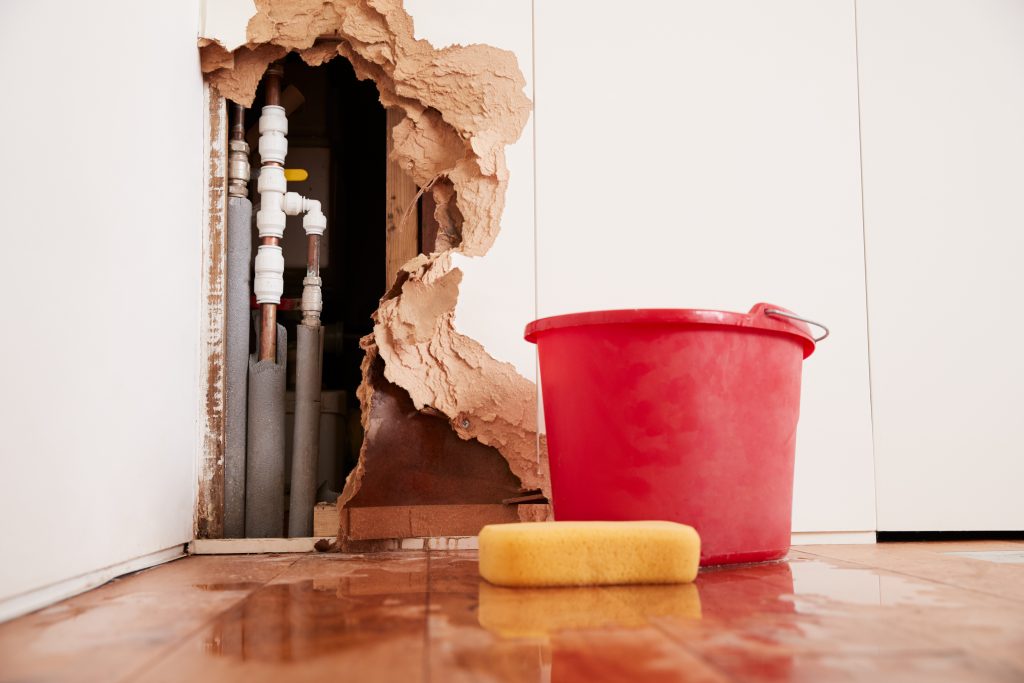Guide To Water Leak Discovery In The House
Guide To Water Leak Discovery In The House
Blog Article
We have unearthed the article relating to Detecting hidden plumbing leaks below on the internet and think it made sense to talk about it with you on my blog.

Early discovery of dripping water lines can alleviate a possible calamity. Some small water leaks may not be visible.
1. Analyze the Water Meter
Every house has a water meter. Examining it is a proven manner in which helps you discover leakages. For starters, shut off all the water resources. Make certain no person will flush, make use of the faucet, shower, run the cleaning equipment or dish washer. From there, most likely to the meter and also watch if it will certainly transform. Because no person is using it, there need to be no activities. That shows a fast-moving leak if it relocates. If you detect no adjustments, wait an hour or two and examine back once more. This implies you might have a slow-moving leak that might also be underground.
2. Inspect Water Usage
Analyze your water costs and track your water consumption. As the one paying it, you should observe if there are any kind of disparities. If you identify sudden changes, despite your intake coinciding, it indicates that you have leakages in your plumbing system. Bear in mind, your water expense should fall under the very same array each month. An unexpected spike in your costs shows a fast-moving leak.
On the other hand, a constant boost on a monthly basis, even with the exact same behaviors, reveals you have a sluggish leakage that's also slowly intensifying. Call a plumber to extensively inspect your building, specifically if you feel a warm location on your flooring with piping beneath.
3. Do a Food Coloring Examination
30% comes from bathrooms when it comes to water usage. Examination to see if they are running correctly. Decrease flecks of food shade in the storage tank and wait 10 mins. If the color somehow infiltrates your dish throughout that time without flushing, there's a leakage in between the container as well as bowl.
4. Asses Outside Lines
Don't forget to examine your outside water lines as well. Test faucets by connecting a garden tube. Should water permeate out of the connection, you have a loosened rubber gasket. Replace this and ensure all links are tight. It will help obtain it properly analyzed and maintained annually if you've got a sprinkler system. One tiny leak can waste lots of water and increase your water costs.
5. Assess the situation and examine
House owners need to make it a practice to check under the sink counters and also inside closets for any bad odor or mold development. These two red flags suggest a leak so timely focus is needed. Doing regular assessments, also bi-annually, can save you from a major issue.
More significantly, if you understand your residence is currently old, keep a watchful eye on your heating units, tubes, pipes etc. Look for discolorations and compromising as a lot of pipelines and devices have a life expectancy. They will certainly additionally naturally wear away because of tear as well as use. Do not wait for it to rise if you believe dripping water lines in your plumbing system. Call a specialist plumber today so you do not wind up with a horrible mess in your house.
Early detection of leaking water lines can alleviate a prospective catastrophe. Some little water leakages may not be noticeable. Examining it is a guaranteed means that helps you find leakages. One little leak can squander bunches of water and increase your water expense.
If you suspect dripping water lines in your plumbing system, do not wait for it to escalate.
WARNING SIGNS OF WATER LEAKAGE BEHIND THE WALL
PERSISTENT MUSTY ODORS
As water slowly drips from a leaky pipe inside the wall, flooring and sheetrock stay damp and develop an odor similar to wet cardboard. It generates a musty smell that can help you find hidden leaks.
MOLD IN UNUSUAL AREAS
Mold usually grows in wet areas like kitchens, baths and laundry rooms. If you spot the stuff on walls or baseboards in other rooms of the house, it’s a good indicator of undetected water leaks.
STAINS THAT GROW
When mold thrives around a leaky pipe, it sometimes takes hold on the inside surface of the affected wall. A growing stain on otherwise clean sheetrock is often your sign of a hidden plumbing problem.
PEELING OR BUBBLING WALLPAPER / PAINT
This clue is easy to miss in rooms that don’t get much use. When you see wallpaper separating along seams or paint bubbling or flaking off the wall, blame sheetrock that stays wet because of an undetected leak.
BUCKLED CEILINGS AND STAINED FLOORS
If ceilings or floors in bathrooms, kitchens or laundry areas develop structural problems, don’t rule out constant damp inside the walls. Wet sheetrock can affect adjacent framing, flooring and ceilings.
https://www.servicemasterbyzaba.com/blog/how-to-detect-water-leakage-in-walls/

I stumbled upon that blog entry about Top leak detection hacks when scouting around the web. If you please set aside a second to distribute this write-up if you enjoyed it. Kudos for your time. Don't forget to come visit our site back soon.
Report this page